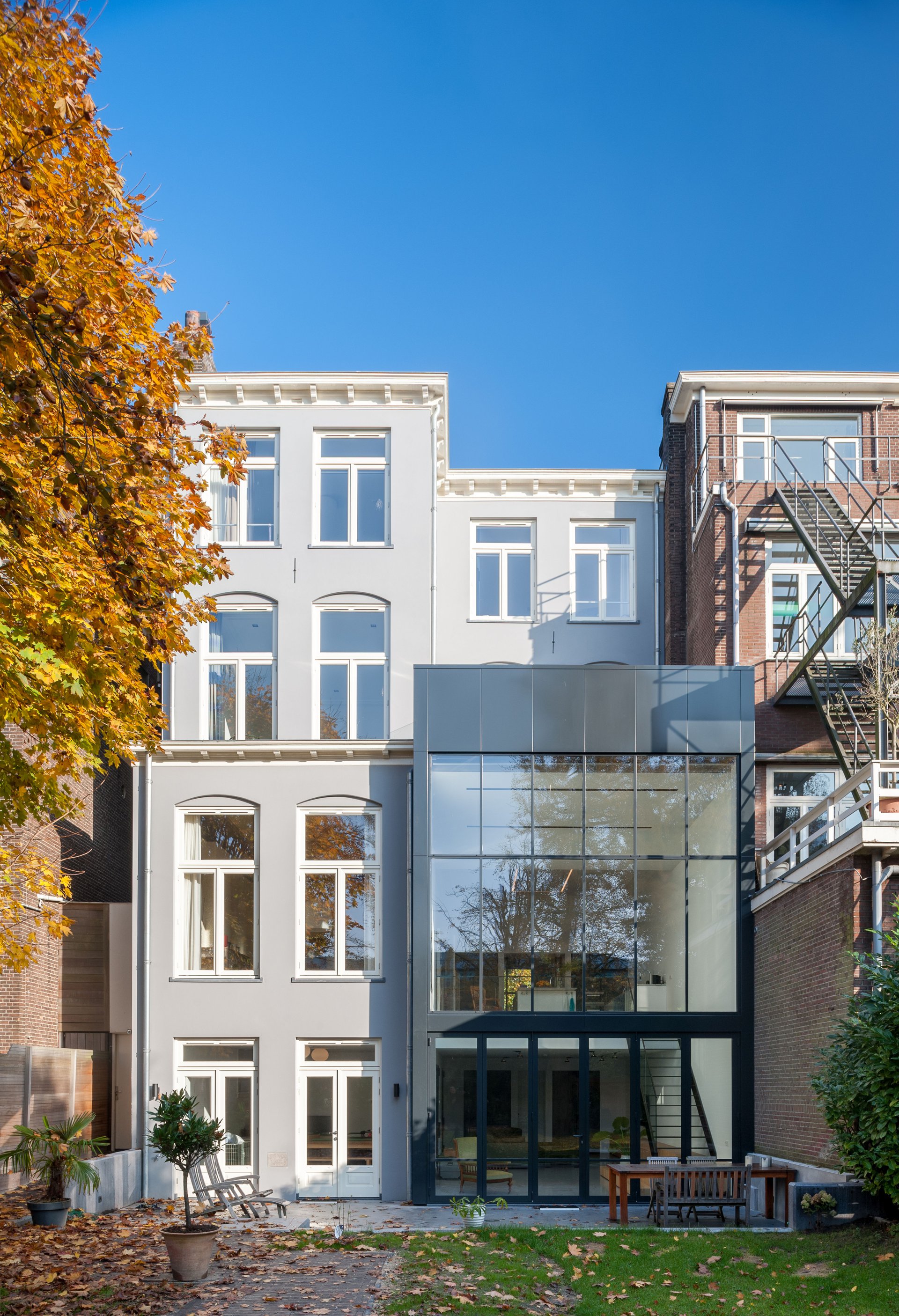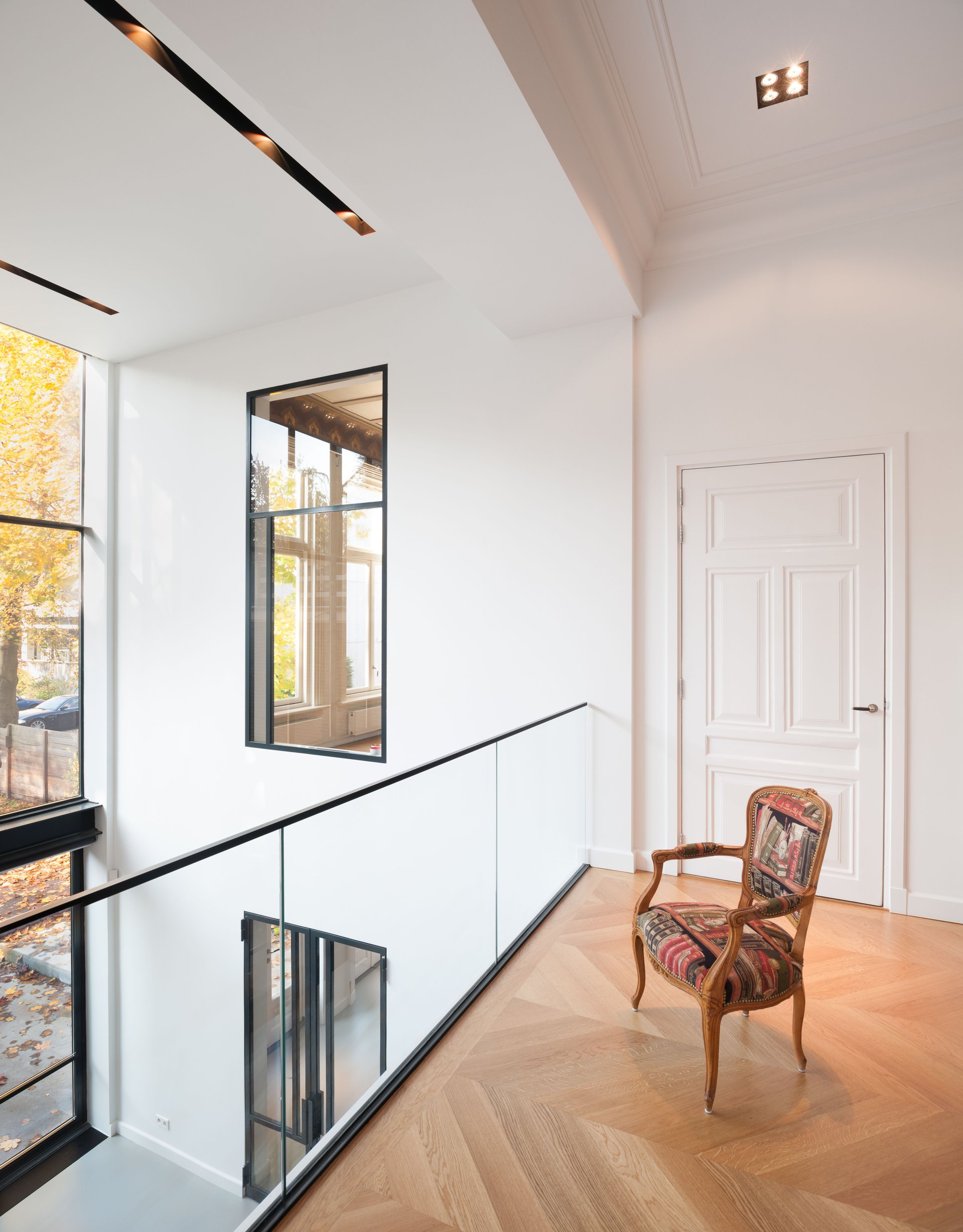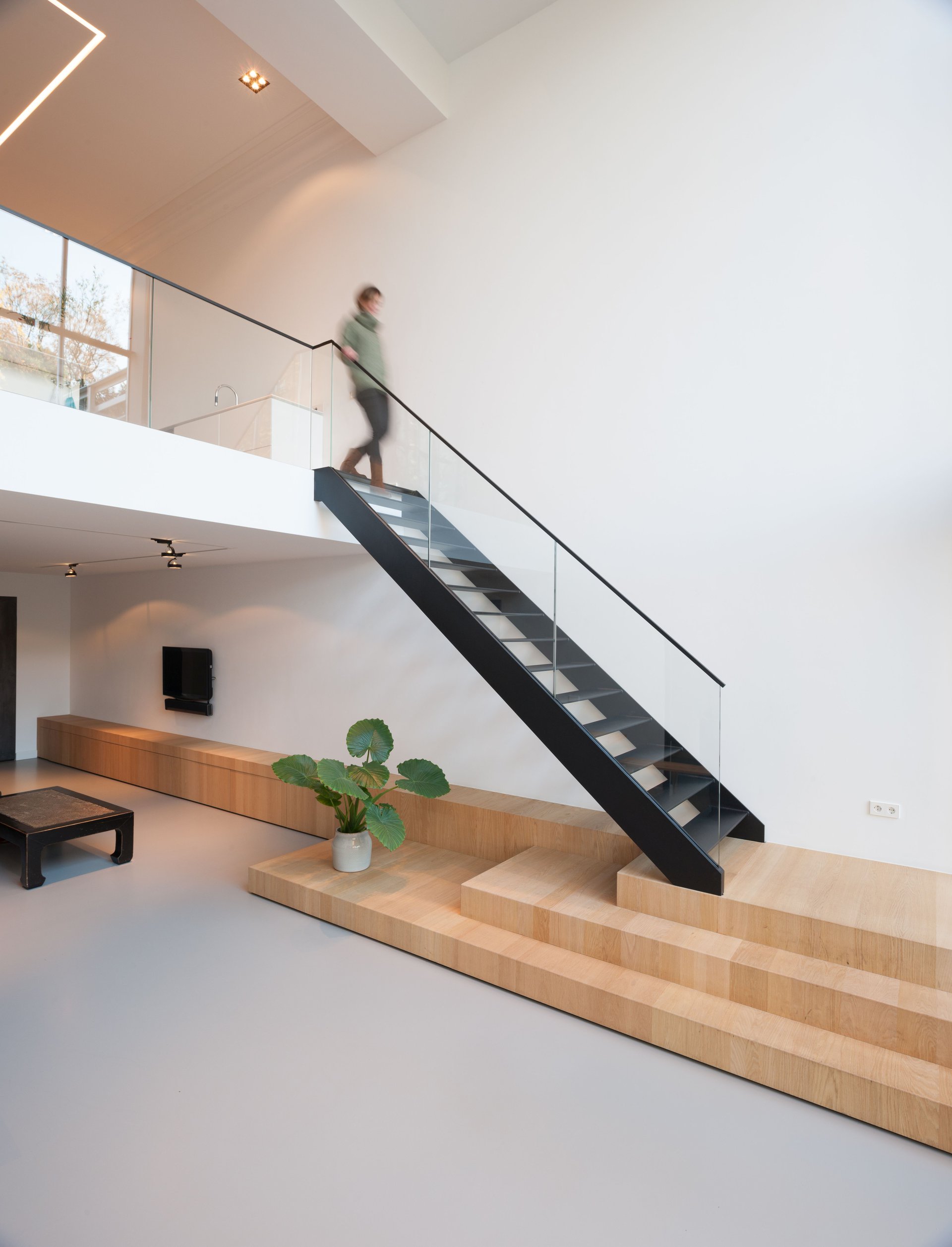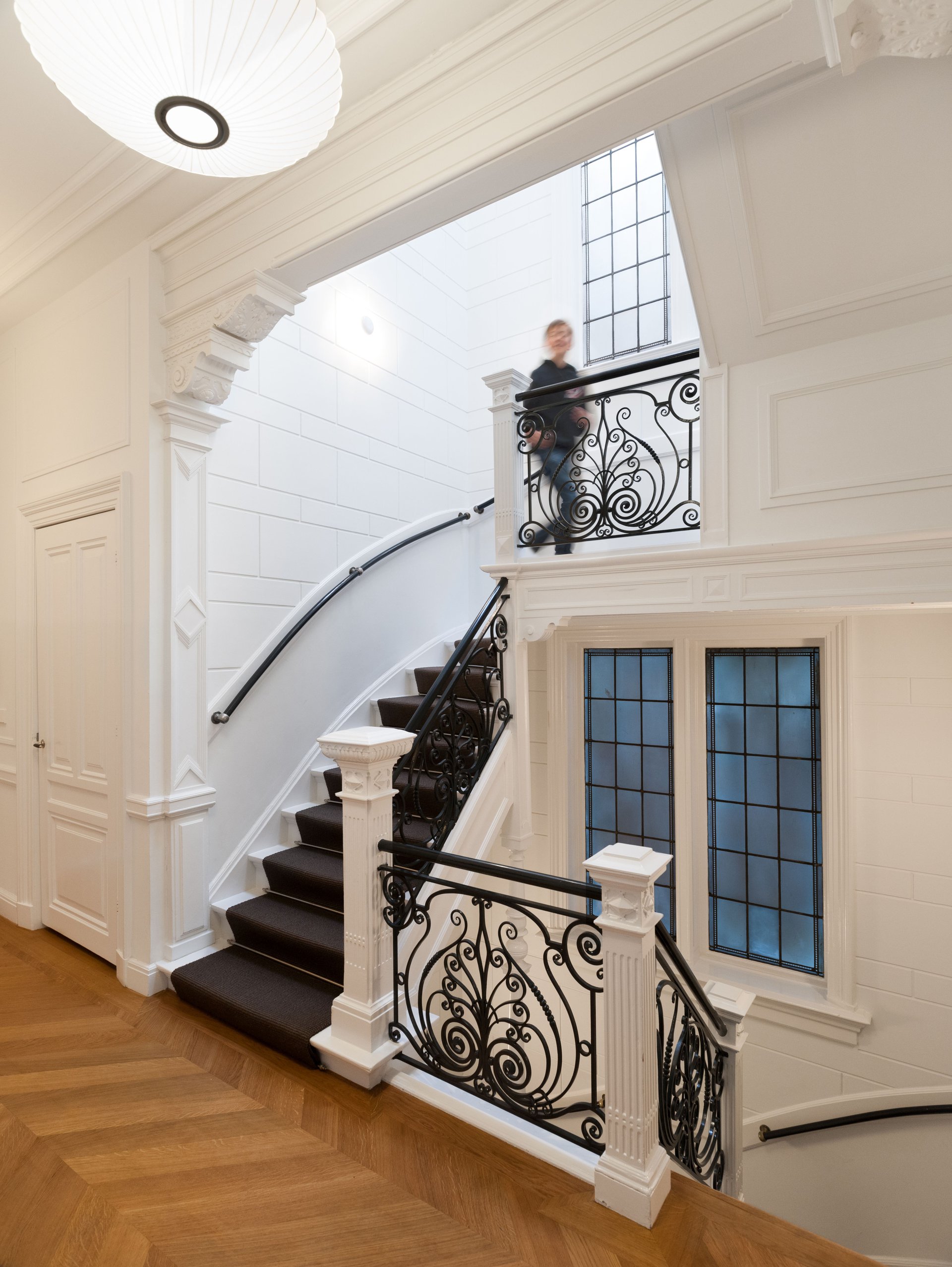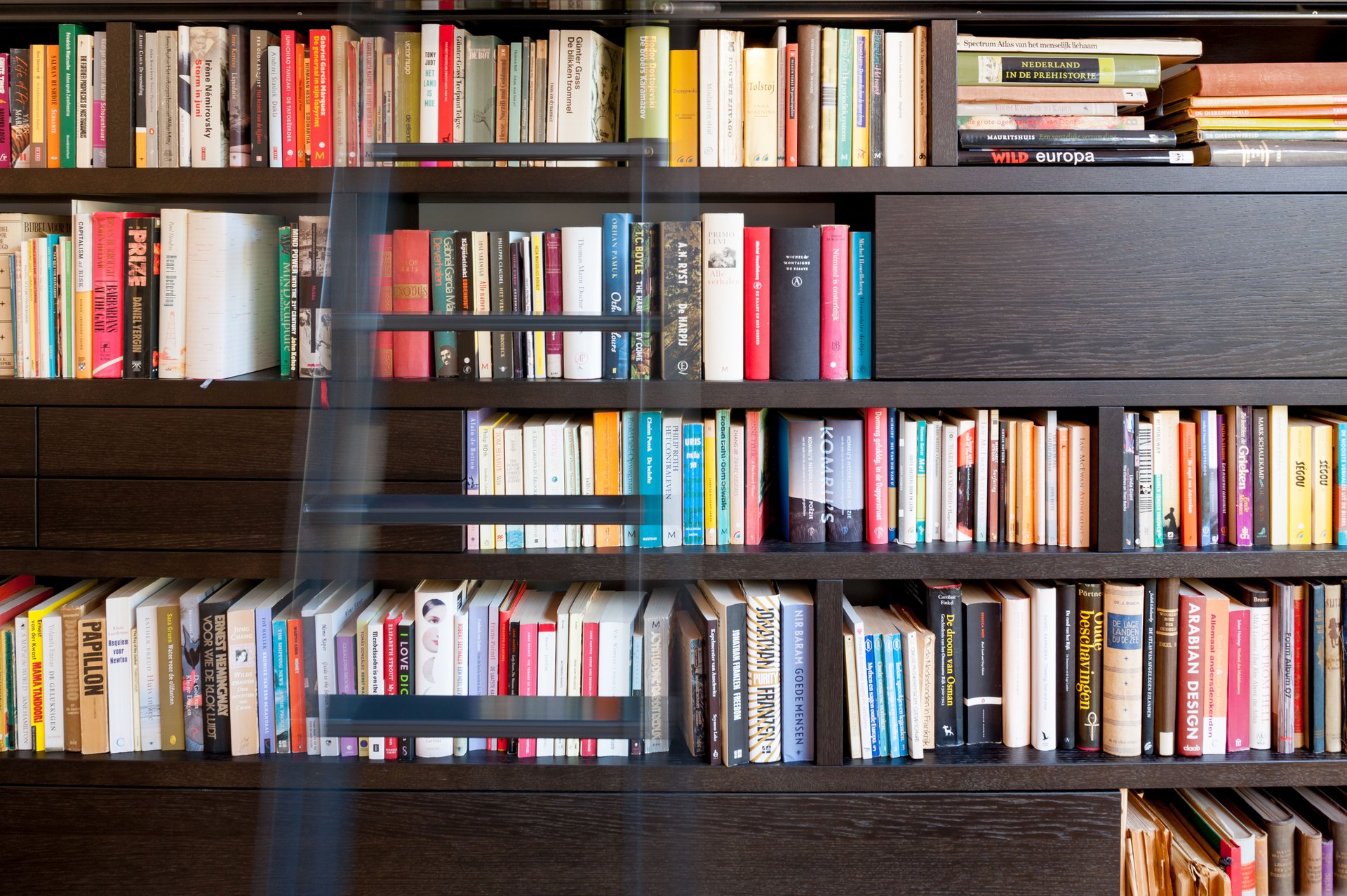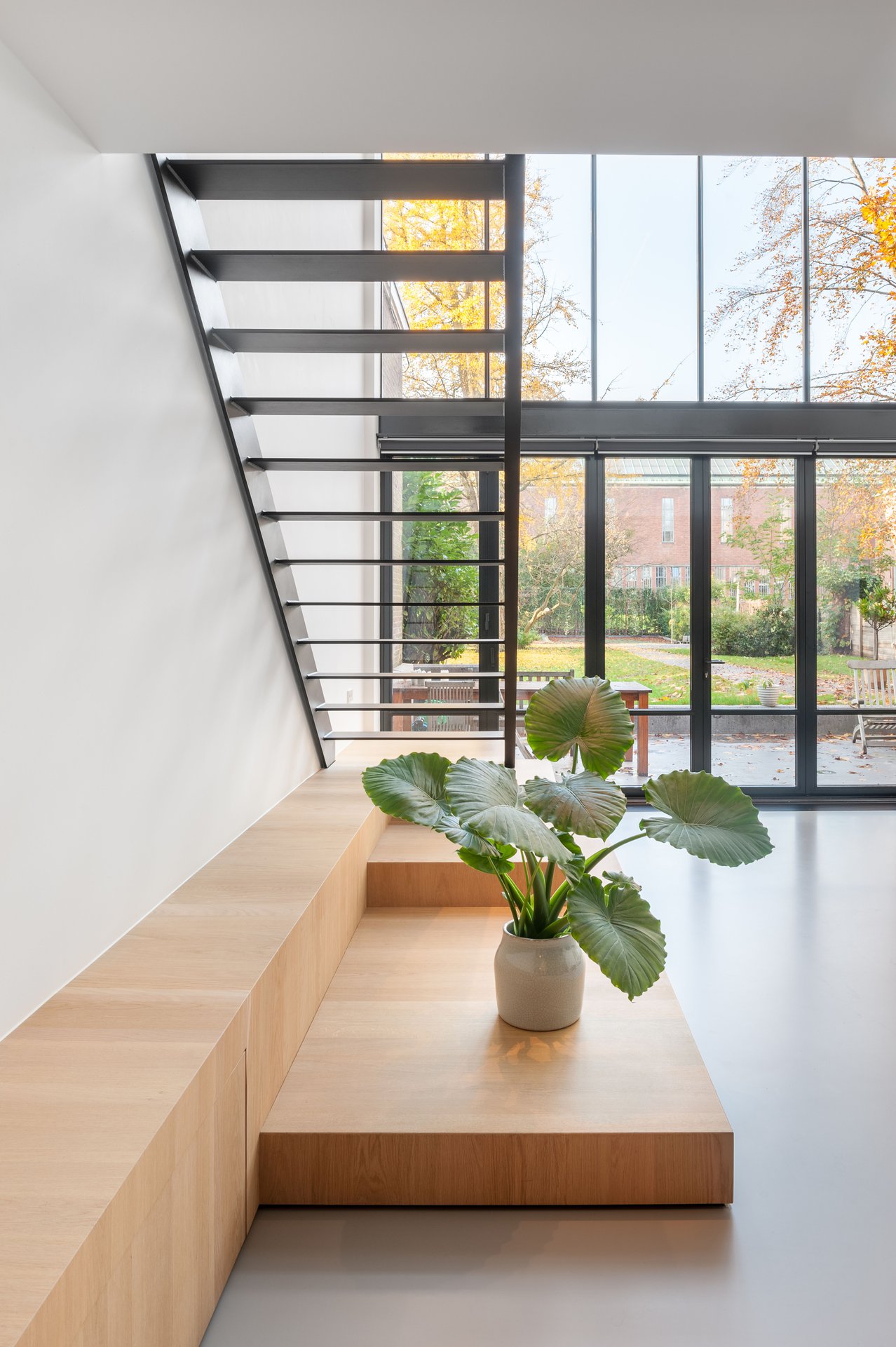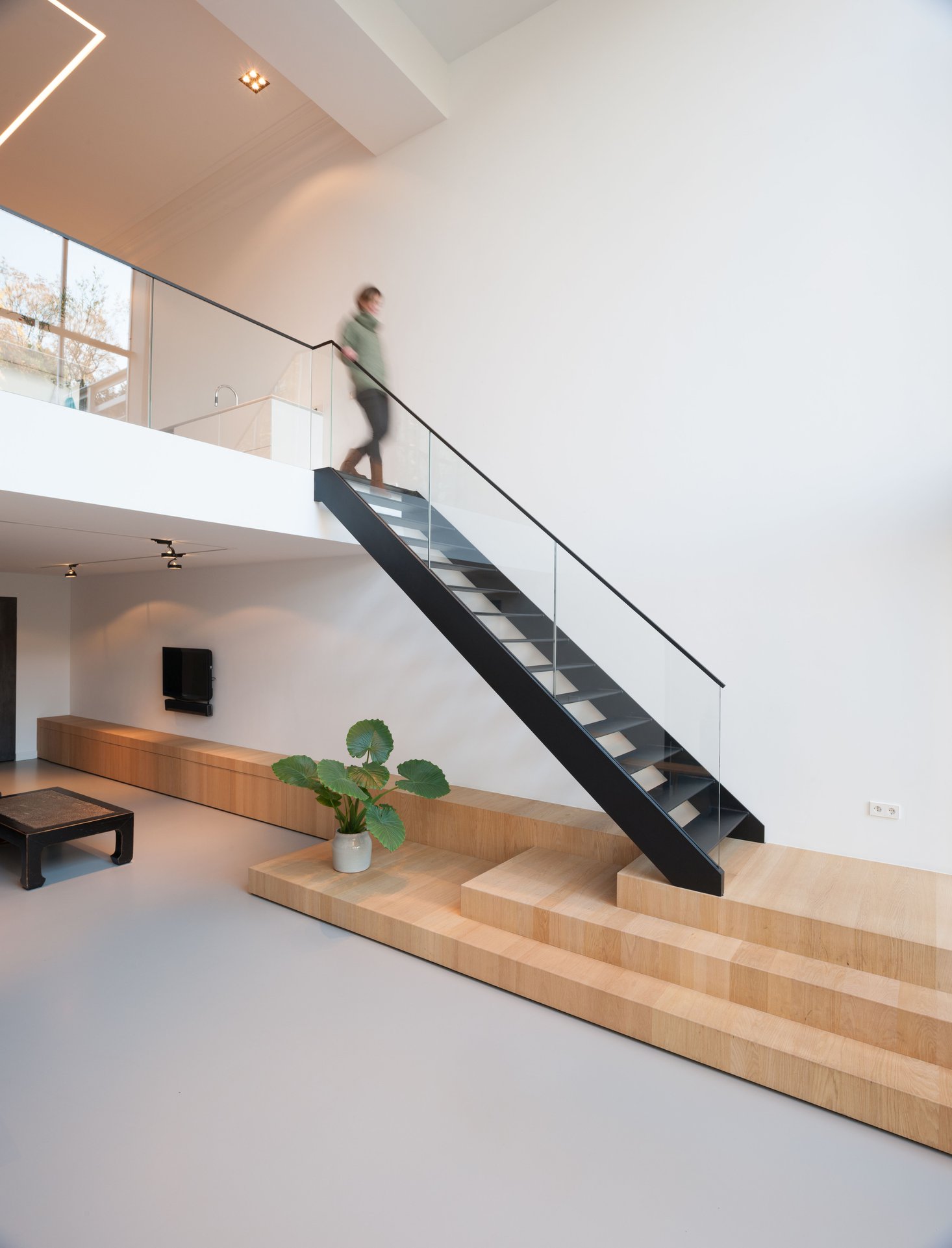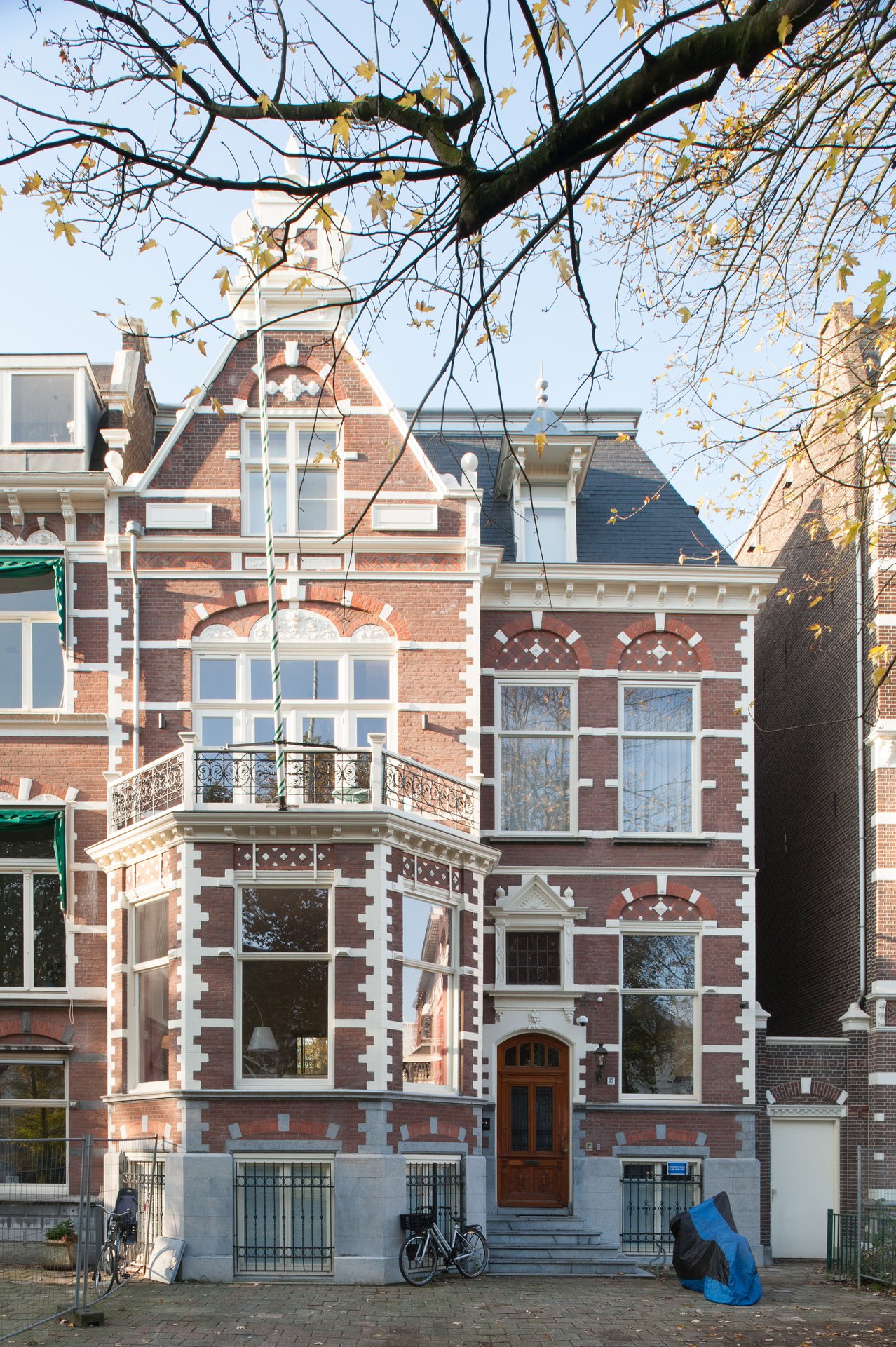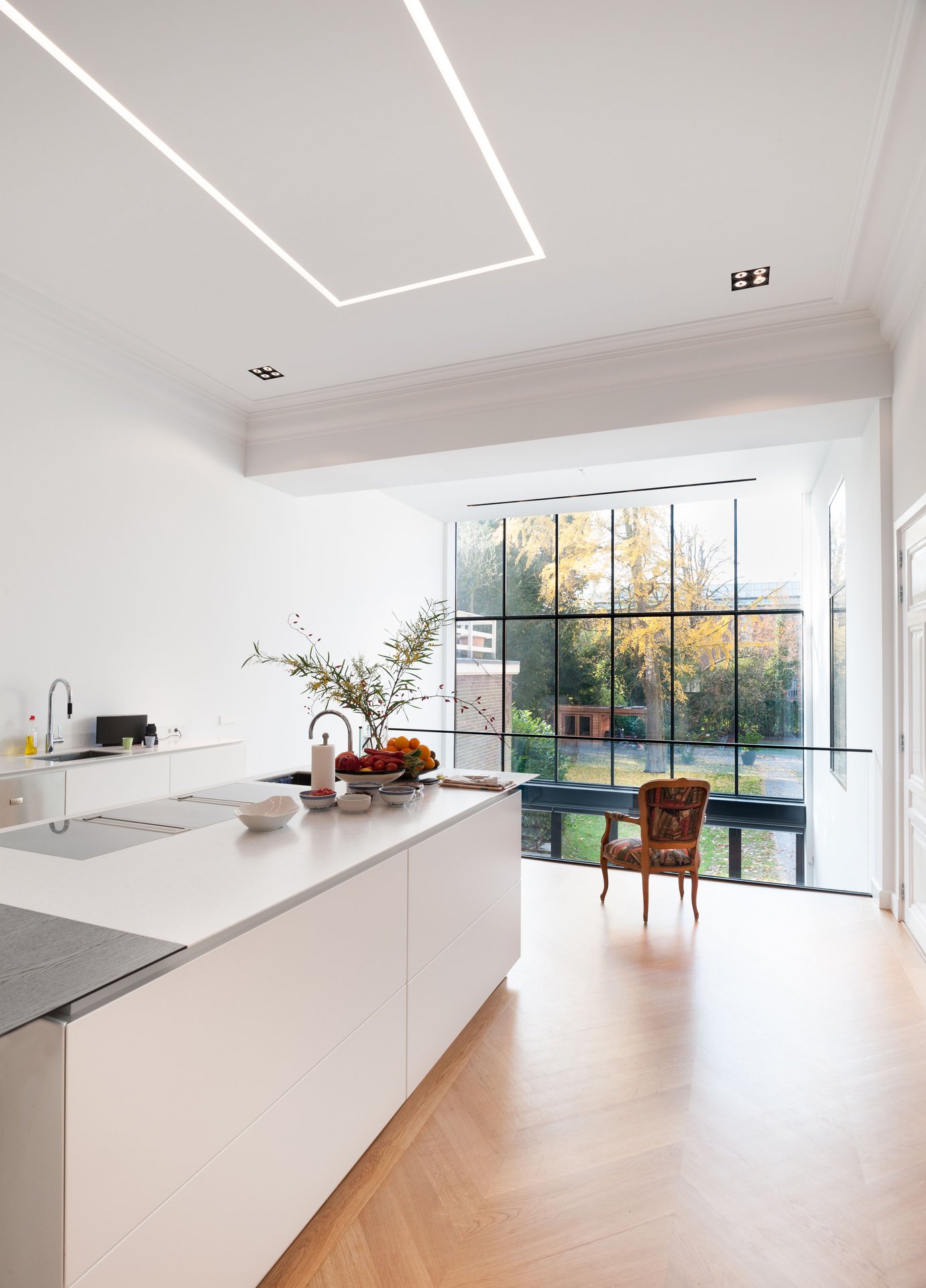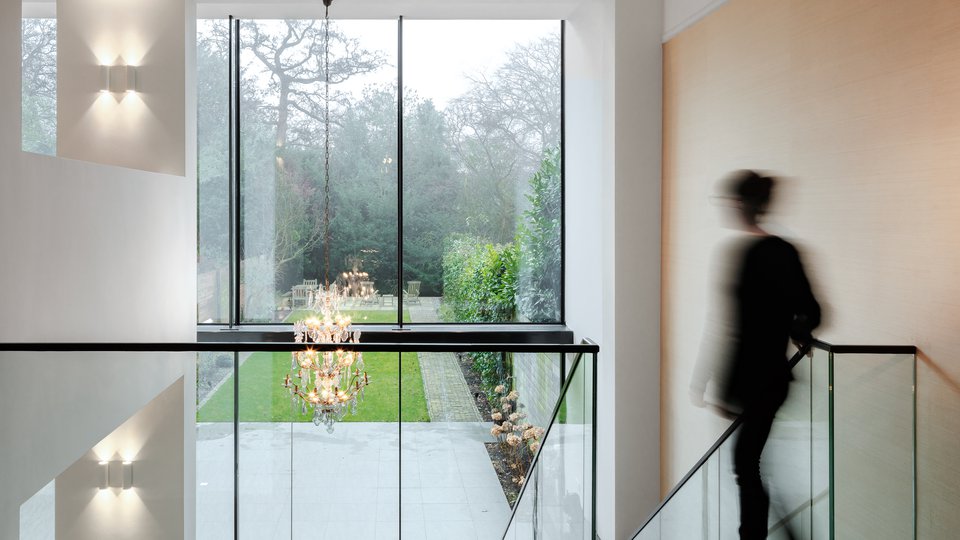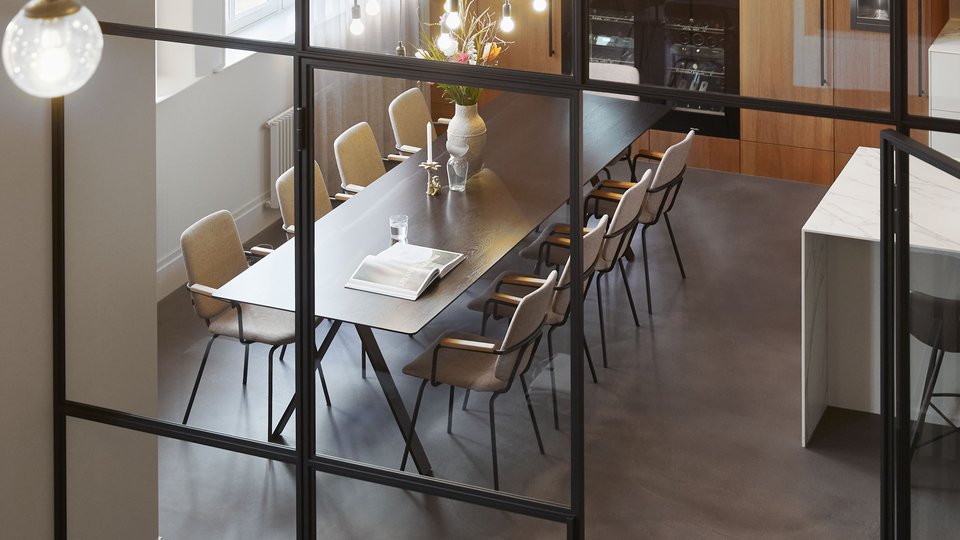| Timeline | September 2014 - May 2016 |
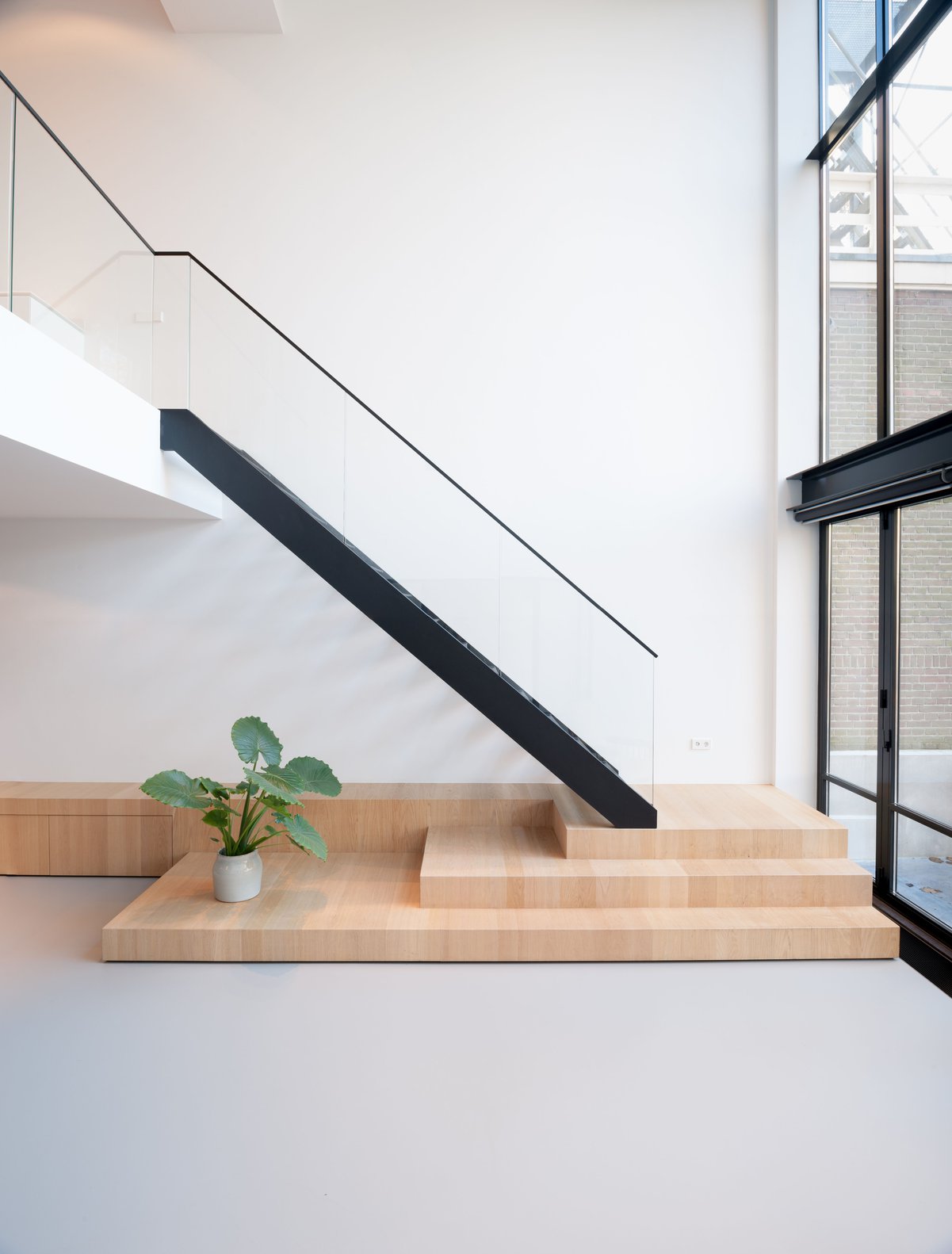
Values for comfortable living have changed and in this residence several interventions now interconnect the main living spaces which are set on both layers with a lush green urban garden. The little representative brick facade at the back is replaced by a large steel and glass façade while a void with an open staircase connects the souterrain to the upper floor. Three additional openings with double glass doors were introduced in the interior. This brings more daylight to the entire souterrain, substantially improving its residential qualities. The studies and bedrooms are located on the first and second levels, accessed with an original grand staircase. Each space in the house was carefully renovated with preservation and restauration of the ornaments and the stained glass windows.
Minimalistic detailing with new materials (glass and steel) distinguish the interventions from the existing. This results in a contemporary residence with an interior that opens to the outside. The reinterpretation of the residential qualities in this home honours of a way of living that transcends more than a century while answering to the wishes of today where intimacy is also found in a closer relation to nature.
Photography: Aemelie Deelder.
Households in the 1900’s would typically use the souterrain as a kitchen, for utilities, storage, as small quarters for the staff and/or a workplace. On the more distinguished upper floor, the main living quarters were situated.


